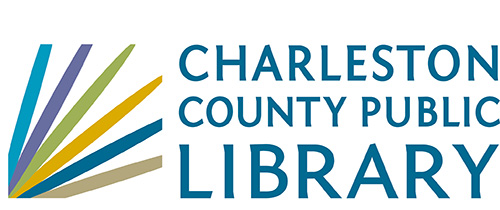Menu
×
West Ashley Library
9 a.m. - 6 p.m.
Phone: (843) 766-6635
Folly Beach Library
9 a.m. - 1 p.m.
Phone: (843) 588-2001
Edgar Allan Poe/Sullivan's Island Library
Closed for renovations
Phone: (843) 883-3914
Wando Mount Pleasant Library
9 a.m. - 6 p.m.
Phone: (843) 805-6888
Village Library
9 a.m. - 6 p.m.
Phone: (843) 884-9741
St. Paul's/Hollywood Library
9 a.m. - 6 p.m.
Phone: (843) 889-3300
Otranto Road Library
9 a.m. - 6 p.m.
Phone: (843) 572-4094
Mt. Pleasant Library
9 a.m. – 6 p.m.
Phone: (843) 849-6161
McClellanville Library
9 a.m. - 1 p.m.
Phone: (843) 887-3699
Keith Summey North Charleston Library
9 a.m. – 6 p.m.
Phone: (843) 744-2489
John's Island Library
9 a.m. - 6 p.m.
Phone: (843) 559-1945
Hurd/St. Andrews Library
9 a.m. - 6 p.m.
Phone: (843) 766-2546
Miss Jane's Building (Edisto Library Temporary Location)
9 a.m. – 3 p.m.
Phone: (843) 869-2355
Dorchester Road Library
9 a.m. - 6 p.m.
Phone: (843) 552-6466
John L. Dart Library
9 a.m. - 6 p.m.
Phone: (843) 722-7550
Baxter-Patrick James Island
9 a.m. - 6 p.m.
Phone: (843) 795-6679
Main Library
9 a.m. - 6 p.m.
Phone: (843) 805-6930
Bees Ferry West Ashley Library
9 a.m. - 6 p.m.
Phone: (843) 805-6892
Mobile Library
9 a.m. - 5 p.m.
Phone: (843) 805-6909
Today's Hours
West Ashley Library
9 a.m. - 6 p.m.
Phone: (843) 766-6635
Folly Beach Library
9 a.m. - 1 p.m.
Phone: (843) 588-2001
Edgar Allan Poe/Sullivan's Island Library
Closed for renovations
Phone: (843) 883-3914
Wando Mount Pleasant Library
9 a.m. - 6 p.m.
Phone: (843) 805-6888
Village Library
9 a.m. - 6 p.m.
Phone: (843) 884-9741
St. Paul's/Hollywood Library
9 a.m. - 6 p.m.
Phone: (843) 889-3300
Otranto Road Library
9 a.m. - 6 p.m.
Phone: (843) 572-4094
Mt. Pleasant Library
9 a.m. – 6 p.m.
Phone: (843) 849-6161
McClellanville Library
9 a.m. - 1 p.m.
Phone: (843) 887-3699
Keith Summey North Charleston Library
9 a.m. – 6 p.m.
Phone: (843) 744-2489
John's Island Library
9 a.m. - 6 p.m.
Phone: (843) 559-1945
Hurd/St. Andrews Library
9 a.m. - 6 p.m.
Phone: (843) 766-2546
Miss Jane's Building (Edisto Library Temporary Location)
9 a.m. – 3 p.m.
Phone: (843) 869-2355
Dorchester Road Library
9 a.m. - 6 p.m.
Phone: (843) 552-6466
John L. Dart Library
9 a.m. - 6 p.m.
Phone: (843) 722-7550
Baxter-Patrick James Island
9 a.m. - 6 p.m.
Phone: (843) 795-6679
Main Library
9 a.m. - 6 p.m.
Phone: (843) 805-6930
Bees Ferry West Ashley Library
9 a.m. - 6 p.m.
Phone: (843) 805-6892
Mobile Library
9 a.m. - 5 p.m.
Phone: (843) 805-6909
Patron Login
menu
Item request has been placed!
×
Item request cannot be made.
×
 Processing Request
Processing Request
Etiological diagnosis of post-diarrheal hemolytic uremic syndrome (HUS): humoral response contribution.
Item request has been placed!
×
Item request cannot be made.
×
 Processing Request
Processing Request
- Author(s): Fiorentino, Gabriela A.; Miliwebsky, Elizabeth; Ramos, María Victoria; Zolezzi, Gisela; Chinen, Isabel; Guzmán, Glenda; Nocera, Rubén; Fernández-Brando, Romina; Santiago, Adriana; Exeni, Ramón; Palermo, Marina S.
- Source:
Pediatric Nephrology. Mar2023, Vol. 38 Issue 3, p739-748. 10p. 3 Charts, 2 Graphs. - Source:
- Additional Information
- Subject Terms: DIAGNOSIS of diarrhea; HEMOLYTIC-uremic syndrome diagnosis; PREVENTION of epidemics; LIPOPOLYSACCHARIDES; DIARRHEA; DNA; SERODIAGNOSIS; MEDICAL screening; BACTERIAL antibodies; RETROSPECTIVE studies; FECES; SEROTYPES; COMPARATIVE studies; ESCHERICHIA coli diseases; DESCRIPTIVE statistics; GENOTYPES; DISEASE prevalence; RESEARCH funding; BACTERIAL toxins; POLYMERASE chain reaction; DATA analysis software; DISEASE complications
- Abstract: Background: Hemolytic uremic syndrome (HUS) is characterized by microangiopathic hemolysis, thrombocytopenia, and thrombus formation leading to tissue injury. HUS is classified according to its etiology as post-diarrheal or atypical HUS. Differential diagnosis of both entities continues to be a challenge for pediatric physicians. Methods: The aim was to improve the rapid etiological diagnosis of post-diarrheal HUS cases based on the detection of Shiga toxin (Stx)-producing Escherichia coli (STEC) infection by screening of stx1/stx2 and rfbO157 in cultured stools by multiplex PCR, and the additional detection of anti-lipopolysaccharide (anti-LPS) O157, O145, and O121 antibodies by Glyco-iELISA test. In addition, we studied patients' relatives to detect circulating pathogenic strains that could contribute to HUS diagnosis and/or lead to the implementation of measures to prevent dissemination of familial outbreaks. This study describes the diagnosis of 31 HUS patients admitted to Hospital Municipal de Niños Prof Dr Ramón Exeni during the 2017–2020 period. Results: Stool PCR confirmed the diagnosis of STEC associated with HUS in 38.7% of patients (12/31), while anti-LPS serology did in 88.9% (24/27). In those patients in which both methods were carried out (n = 27), a strong association between the results obtained was found. We found that 30.4% of HUS patients had at least one relative positive for STEC. Conclusions: We could identify 96.3% (26/27) of HUS cases as secondary to STEC infections when both methods (genotyping and serology) were used. The results demonstrated a high circulation of STEC in HUS families and the prevalence of the STEC O157 serotype (83%) in our pediatric cohort. A higher-resolution version of the Graphical abstract is available as Supplementary information. [ABSTRACT FROM AUTHOR]
- Abstract: Copyright of Pediatric Nephrology is the property of Springer Nature and its content may not be copied or emailed to multiple sites or posted to a listserv without the copyright holder's express written permission. However, users may print, download, or email articles for individual use. This abstract may be abridged. No warranty is given about the accuracy of the copy. Users should refer to the original published version of the material for the full abstract. (Copyright applies to all Abstracts.)
- Subject Terms:
Contact CCPL
Copyright 2022 Charleston County Public Library Powered By EBSCO Stacks 3.3.0 [350.3] | Staff Login


No Comments.